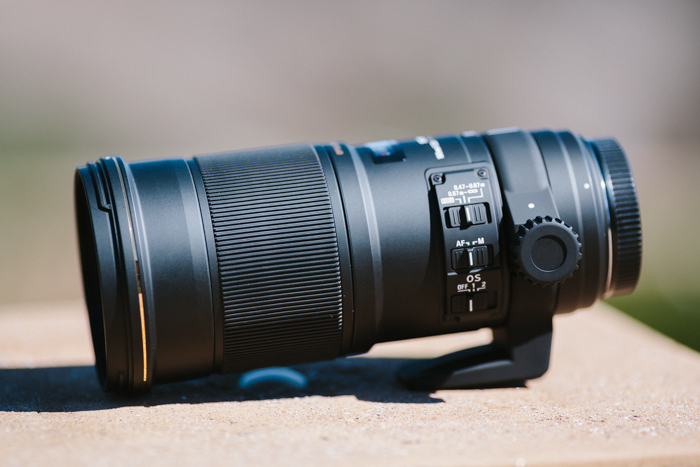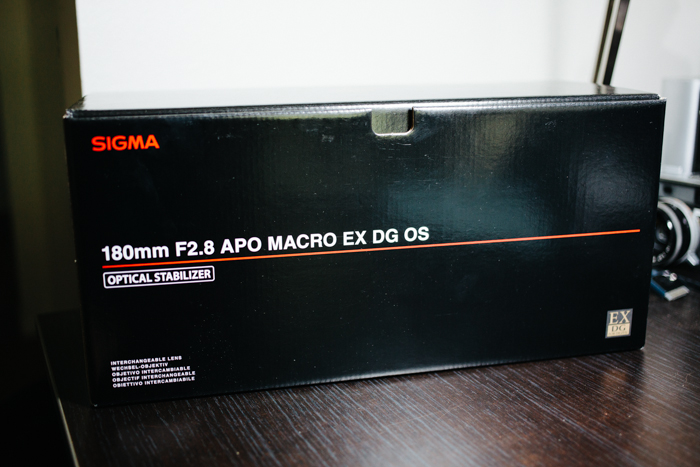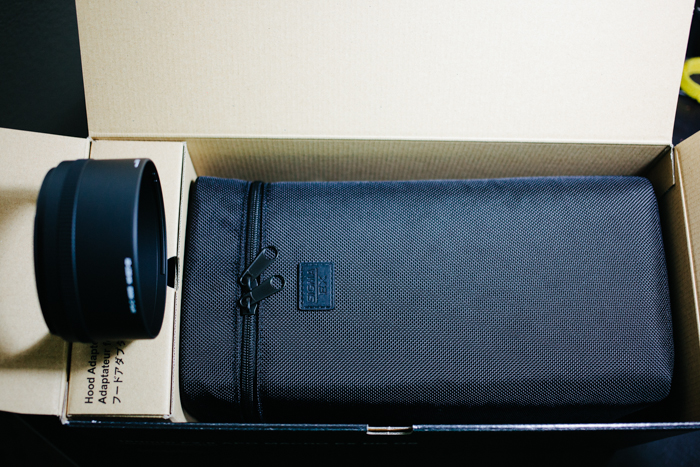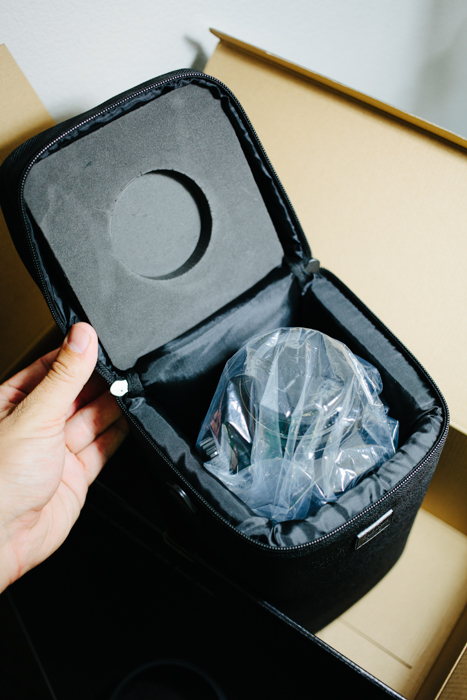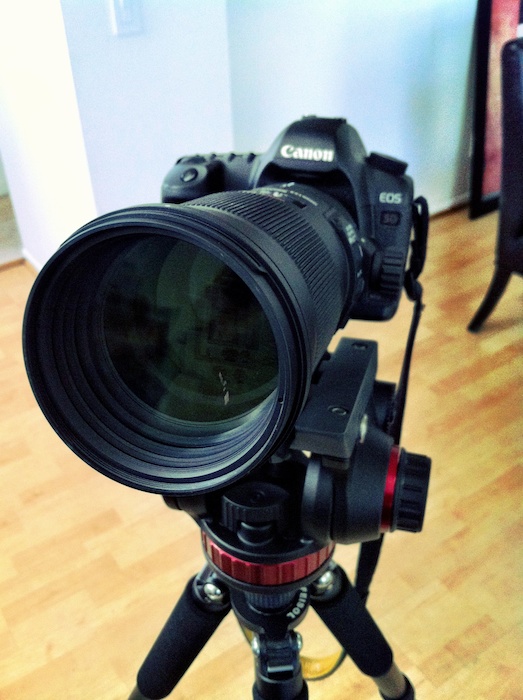Last Updated on 11/23/2012 by Abram Goglanian
There are many 180mm lenses out there made by most major lens manufacturers. Some are fast (f/2.8). Some have macro (1:1). Only one, however, has both, and to top it off, it has image stabilization as well. That lens is the Sigma APO Macro 180mm f/2.8 EX DG OS HSM (Sigma 180mm from here on). If you have read our first impression of the lens you may have seen some of the impressive detail that this lens is capable of rendering. Read on for the full review.
Short Version
The Sigma 180mm is a highly impressive lens. Not only has Sigma added their 4-stop OS (Optical Stabilization) system to their existing 180mm macro, they managed to pry open to aperture to f/2.8 up from f/3.5 (where most 180mm macro lenses fall). They have also added 3 FLD elements (similar to Fluorite) to the lens to help combat Chromatic Aberrations (commonly referred to as: CA). All of this results in a lens that is exceptionally sharp, capable of true 1:1 macro magnification and able to be hand-held at speeds well below 1/200 (where one would normally have to shoot this focal length for an acceptably sharp exposure).
Pluses
- Impressive sharpness
- Accurate AF
- Excellent macro capabilities
- Accurate AF (wait didn’t I already say that? Yeah, it’s that important)
- Very usable stabilization system
Minuses
- Somewhat heavy
- Somewhat specialized (potentially limited uses)
- Quite expensive at $1699 (at time of this writing)
What’s in the box?
Sigma includes a really well padded lens case (with a shoulder strap) that you could store this lens in or even other lenses of a similar length. They, of course, give you front and rear lens caps, a nice interlocking hood, and a hood extension adapter for APS-C cameras. All in all, it’s a nice presentation.
Specs
(Taken from B&H)
| Features | |
|---|---|
| Image Stabilization | Yes |
| Autofocus | Yes |
| Tripod Collar | Yes |
| Physical | |
|---|---|
| Filter Thread | Front: 86 mm |
| Dimensions (DxL) | Approx. 3.74 x 8.03″ (95 x 203.9 mm) |
| Weight | 3.6 lb (1.63 kg) |
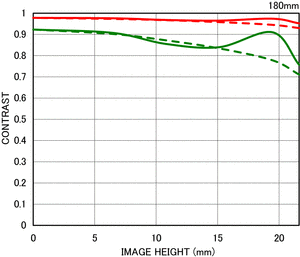

Ergonomics
There’s no mistaking it–this is a big lens, and in the hand I felt that this was slightly larger than a 70-200mm f/2.8 as well as slightly heavier. That being said, I don’t find it to be unbearable to hold or to shoot with. In fact it was rather easy to balance with an ungripped 5DmkII (though I found the balance was perfect with a pro-sized body). The size of the lens does not make it easy to manually focus when shooting hand-held, though it is still possible. The toggle switches for the focus limiter, OS and AF / MF are easy to activate and have no slop in their action. Speaking of, there is a nice switch on the side to limit the range of focusing (in case you do not want to shoot macro, this will greatly speed up the AF of the lens), additionally there is a switch to toggle the two OS modes (or disable completely). On the whole the lens feels extremely well made and in no way lacking for build quality.
Autofocus
While in macro mode the focus is not lightning quick. That’s not to say that it is slow, but it does take a moment extra to lock on to subjects. This is not, however, uncommon for 1:1 macro lenses so I don’t think it’s anything to fear. If you limit the AF switch to one of the other two settings and preset the focus to be out of the macro range things snap into focus quickly. I was able to lock onto to moving objects and people without trouble and nearly as quickly as my Canon L lenses would in this range. This is thanks to Sigma’s HSM AF system (which is quite similar to Canon’s USM system) and one big thing to note is that the autofocus is ACCURATE, I did not even have to use the microadjustment features of my camera. I bring up this point because I have had something of a streak with Sigma lenses. I mean no offense to them, but I was never able to get lenses like the 50mm f/1.4 or other zooms to focus consistently. I am quite happy to report that this is not the case with the 180mm f/2.8! Each and every subject I focused on was nailed the first time, every time. My main camera is the 5DmkII, and while I’ve never really complained about the AF abilities (because I understand its limitations) there are many who claim it is inaccurate. I can confirm that at the very least with this lens it is spot on and works beautifully. Bravo Sigma!

Build Quality
Sigma built a tank. The 180mm f/2.8 is constructed beautifully and when you shake it nothing rattles or feels loose. The outer shell has a sort of “soft” feel to it, but this is the signature coating of most of Sigma’s EX lenses these days. (That may change with their new lines of lenses though.) The toggle switches all engage with a positive “click” so you know for sure when it is engaged, this is quite nice as there is no guessing if you enabled the focusing limiter or not! There is nothing lacking in the quality of the construction in this lens in my opinion.
Image Quality
If I had to sum up my impression of the image quality this lens delivers into one word, it would be “unexpected”. Having used macro lenses in the past, I know them to be typically sharp, but I have never used one quite this long before so I was not sure what to fully expect with the 180mm f/2.8. From the first images I shot I was completely impressed with the outstanding clarity and detail this lens delivered, even straight out of the camera! I have a feeling that it may even outresolve the 5DmkII sensor, but don’t quote me on that yet.
With an MFD of 18.5″ you have a very close working distance for 1:1 macro capabilities. This allows you to enlarge incredibly small details to life size or greater. You can also take advantage of things like extension tubes and tele-converters to go well beyond life-size with your images as well. It becomes slightly difficult to focus in my opinion, but I was impressed with the tiny intricacies one can find with a greater than life-size reproduction. Here are a couple examples using extension tubes:
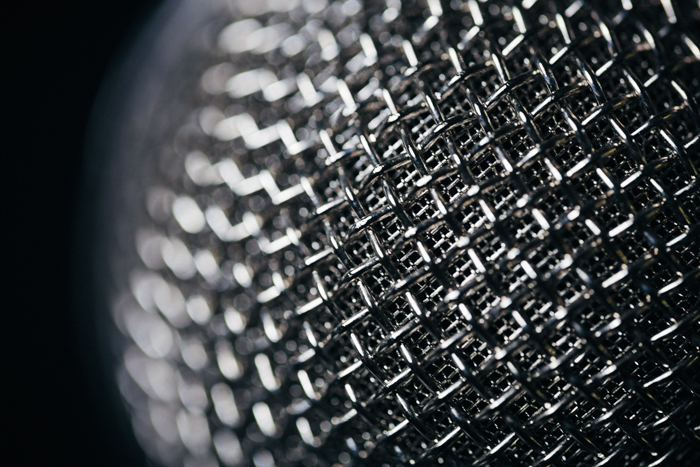
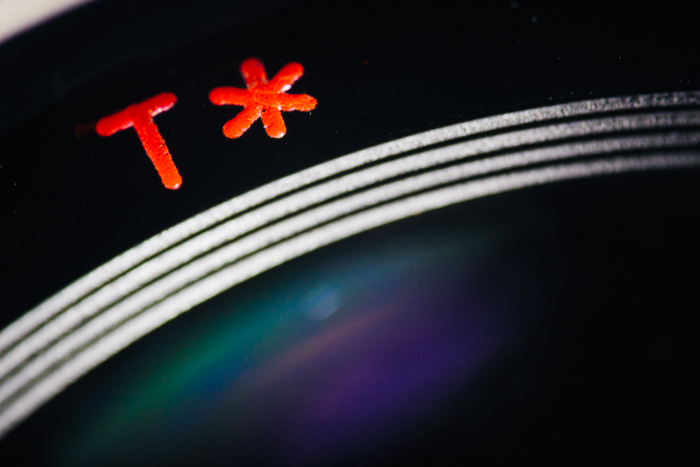
Additionally, the bokeh of the lens is actually quite pleasant, with 9 aperture blades, and a longer focal length, this lens is quite capable of rendering some beautiful out of focus areas. This is plainly evident in macro images where your depth of field is incredibly thin and you actually have to stop down to get much in focus at all. Overall I can find nothing to complain about in the bokeh department. Here’s a couple examples of what I mean:
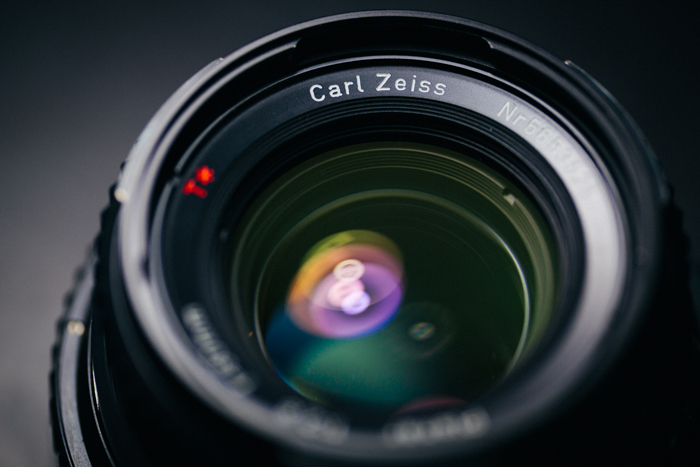

The image stabilization works quite well, and this is coming from someone who isn’t a huge believer in IS lenses. In my personal opinion and experience with IS lenses in the past, I found them to be inferior to their non-IS counterparts, and being someone that cares a great deal about image quality, I tend to avoid anything that detracts from it. That being said, things have obviously changed over the years and Sigma’s IS system works very well in this lens and doesn’t detract from the image quality one bit. They claim it to be able to add 4-stops of hand-hold-ability. Without having done any sort of scientific testing, I did my best to be as stable as possible in the worst possible lighting conditions. I came away rather impressed in that I was able to pull off shots in conditions that would have been impossible with a telephoto lens and no stabilization. Here’s an example at MFD:
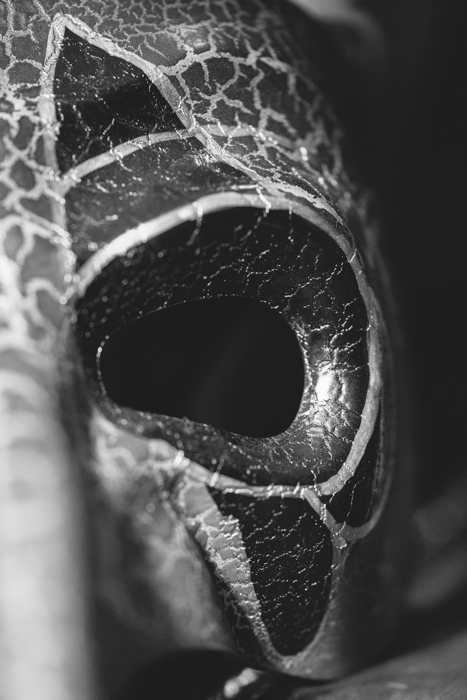
Now, despite the fact that this lens is indeed a true macro lens, that does not make it a one-trick pony. It is more than capable at functioning as a regular telephoto lens (think portraits & wildlife / landscape imagery). A 180mm f/2.8 lens is actually a great focal length to have for portraiture if you have the working room to take advantage of it. For instance, if you have a lot of room to work with, shooting a full body portrait at f/2.8 will completely isolate your subject from the background and deliver a very unique result that is really only possible with longer lenses. Also, being able to focus far closer than your typical 180mm lens just makes it even easier to produce the effect. Here’s an example to show what I mean:

Closing Thoughts
I found the Sigma 180mm f/2.8 Macro to be an excellent lens, capable of producing images of outstanding clarity and handles post-processing very well. It is quite expensive at $1699, so it is hard to call this lens a “bargain” by any stretch of the imagination, but what you do get for that cost of entry is one heck of a macro / portrait / general telephoto lens. Overall, if you work in this range often this is going to be a hard lens to pass up. No other lens currently manufactured (as of Nov. ’12) has the features of the Sigma 180mm f/2.8 Macro. If you only shoot macro images infrequently, or don’t often use telephoto lenses, I would suggest looking elsewhere. I should also mention that while I was testing and working with the Canon EOS mount version it is also available for Nikon F mount right now and will soon be available for Sigma’s own mount and Sony’s Alpha mount.
Pluses
- Impressive sharpness
- Accurate AF
- Excellent macro capabilities
- Accurate AF (wait didn’t I already say that? Yeah, it’s that important)
- Very usable stabilization system
- Handles processing well
- Built like a tank
- Beautiful bokeh in most situations
Minuses
- Somewhat heavy
- Images need a slight boost in contrast (if that’s your thing)
- Somewhat specialized (potentially limited uses)
- Quite expensive at $1699 (at time of this writing)
I will leave you with one final image and say that in my time spent with the Sigma 180mm I quite enjoyed working with it, and the possibilities it opened up for image-making. I was sorry to see it go!
Please Support The Phoblographer
We love to bring you guys the latest and greatest news and gear related stuff. However, we can’t keep doing that unless we have your continued support. If you would like to purchase any of the items mentioned, please do so by clicking our links first and then purchasing the items as we then get a small portion of the sale to help run the website.
Also, please follow us on Facebook, Flickr and Twitter.


